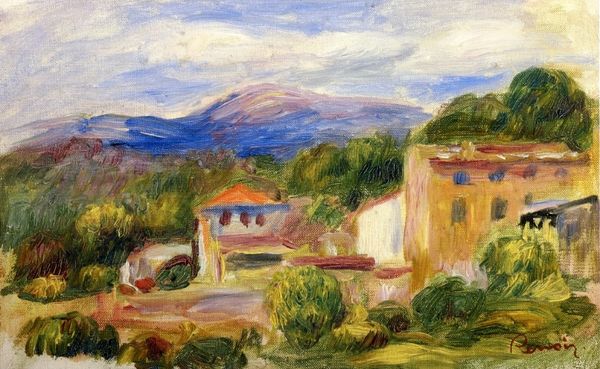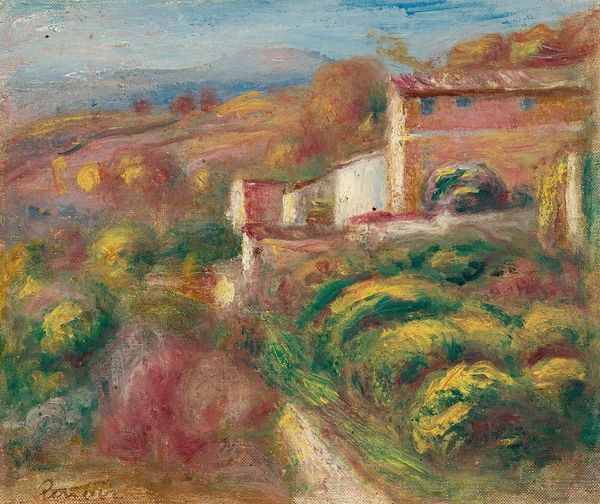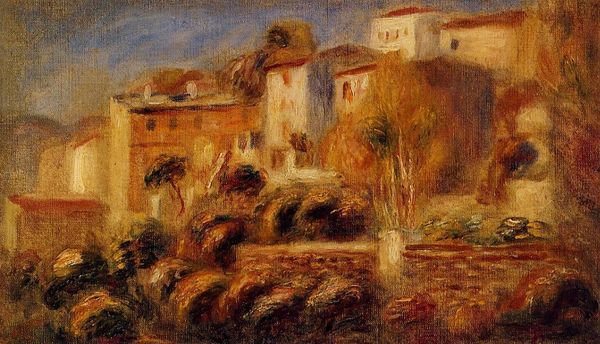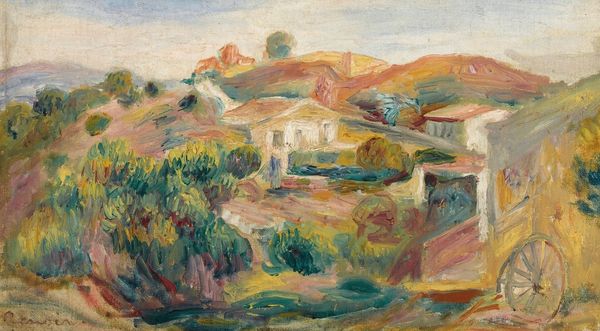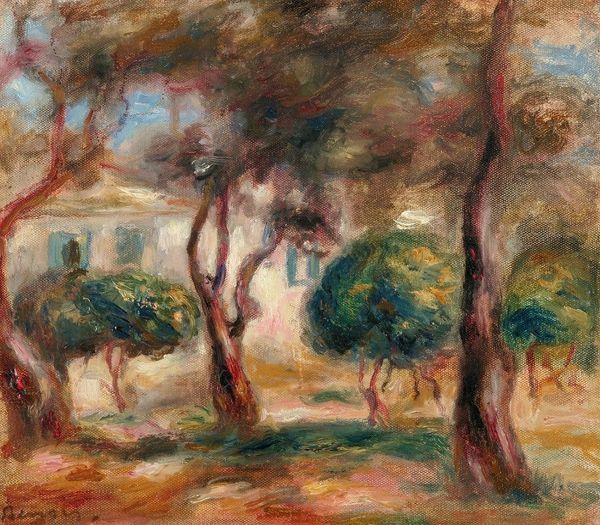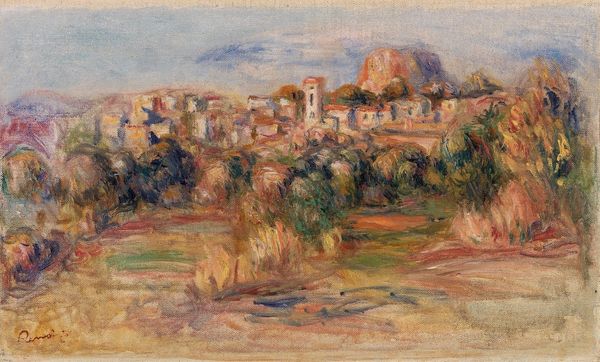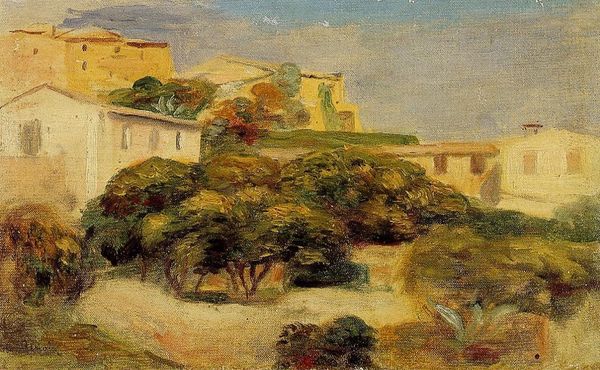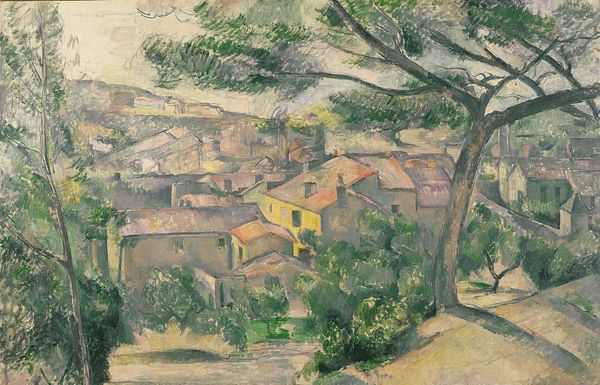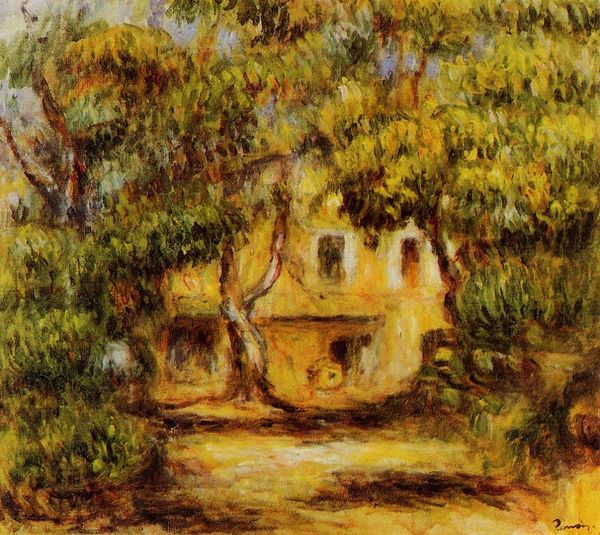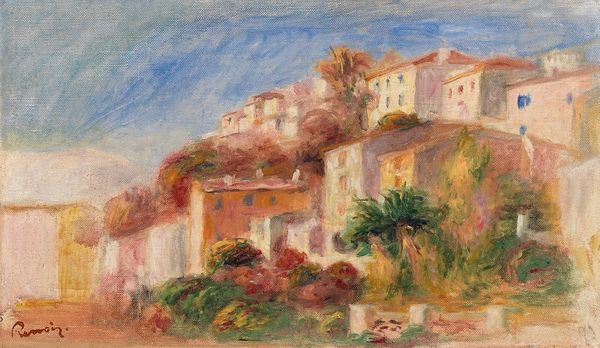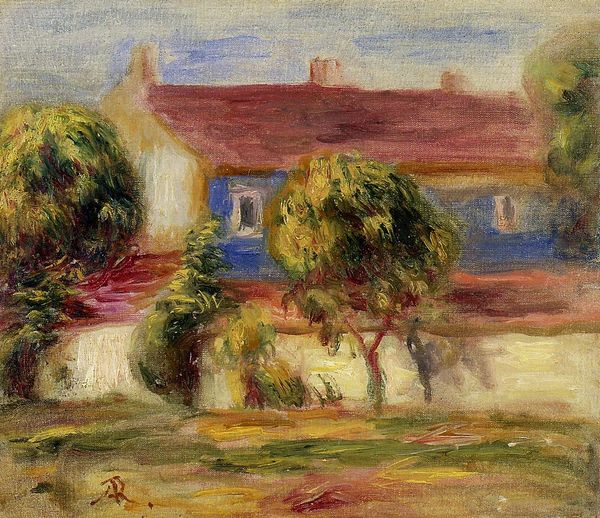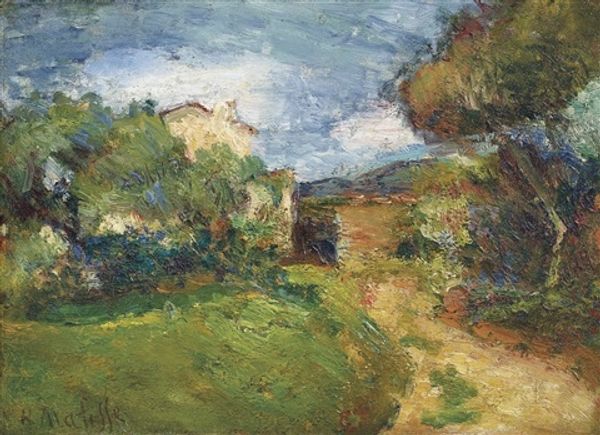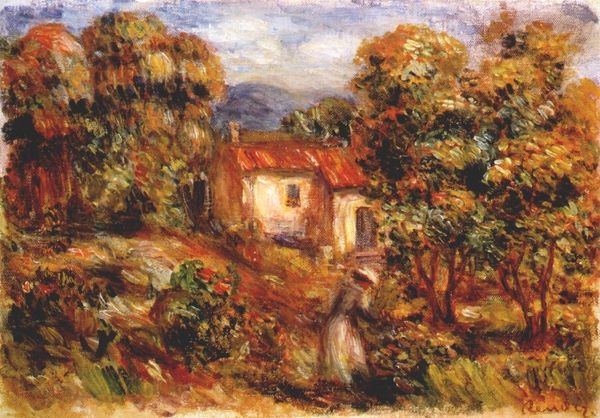
Copyright: Public domain
Editor: Here we have Renoir’s “Maison de la Poste,” painted in 1907. It's an oil painting that really captures the feel of a small town. I’m immediately drawn to the warm palette and how the buildings almost seem to melt into the landscape. It's charming. What's your take? Curator: The charm is intentional. Renoir wasn’t simply recording a scene, but presenting a vision of France, possibly for an emerging middle class. Consider the time period. The rise of leisure and tourism intersected with growing nationalist sentiment. How might a painting like this function as propaganda, of sorts, promoting a particular image of French life and landscape? Editor: Propaganda? It feels so… gentle. Curator: That’s part of its effectiveness! Soft brushstrokes, harmonious colors, and a seemingly idyllic setting work to construct a vision of a peaceful and desirable society. Look closely at the "Maison de la Poste," the post office itself. What does it symbolize for you in this context? Communication? Connection? Editor: Maybe, but also authority? This might not be as innocent as I first thought. I didn’t consider the government’s role in shaping how people see their country through art. Curator: Exactly. Even Impressionism, often perceived as radical, participated in these larger cultural conversations and was adopted by certain establishments. The public reception, therefore, becomes key to understanding the painting’s deeper socio-political layers. Editor: That really shifts my perspective. I see the painting in a totally different way now, as less of an innocent landscape, and more of a statement, deliberate or not. Curator: And that’s the power of looking at art through the lens of history.
Comments
No comments
Be the first to comment and join the conversation on the ultimate creative platform.
